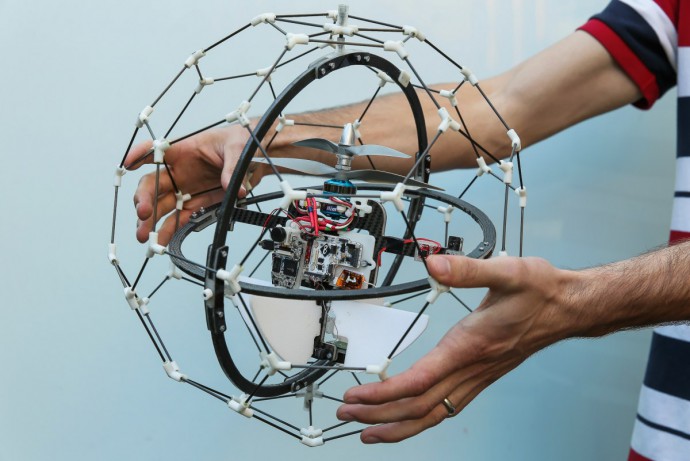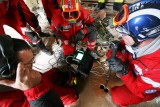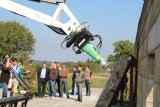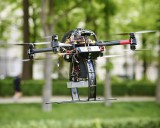Flying insect-like robot Gimball can crash and recover
Insect-like flying rescue robot that can bounce off trees and buildings has been presented by its creators.
The Gimball robot has been developed for use in situations that are hazardous to human beings. Designed with the capability of dealing with crashes, and recovering after a collision, Gimball has a protective spherical roll-cage, and is mounted on pivots to enable it to stay upright. The flying robot, which bounces off walls, moves in a similar way to a mosquito.
The design of Gimball was inspired by the way insects fly, co-creator Adrien Briod told the BBC. "Usually robots need to move around obstacles, so we thought it would be interesting to allow it to sustain collisions," Mr Briod said. The drone, described as "crash happy", was designed and built by a team in Switzerland at the Ecole Polytechnique Federerale de Lausanne (EPFL) one of the ICARUS partners. The robot was developed for use in disaster situations, such as entering a burning building, or in the event of a radiation leak. Normally flying robots would be unable to function after a major collision, but the design team did not think this problem could be solved by simply adding more sensors. To keep Gimball lightweight, the research team decided to allow the robot to ricochet off obstacles instead.
The robot has a rotating flexible frame that allows it to bounce off anything that it hits in a chaotic environment. To enable it to stay upright, Gimball has a gyroscopic system that includes an accelerometer, the same type of sensor used in smartphones to let the phone know which way is up. The battery-driven robot has two propellers, and is steered by fins. It is fitted with a motion sensor, a camera, an altimeter, a magnetic compass and a micro-controller processor. Mr Briod indicated that he 34cm (13 inch) , 370g (13oz) drone can lift weights of up to 30g, so it can carry gas or radioactivity sensors. The robot can be remotely controlled, but Mr Briod aims to eventually incorporate artificial intelligence capabilities into Gimball to allow it to accomplish complex tasks autonomously. The team that built Gimball at the Laboratory of Intelligent Systems at EPFL included Mr Briod and engineer Mariusz Kornatowski.
- Login to post comments














